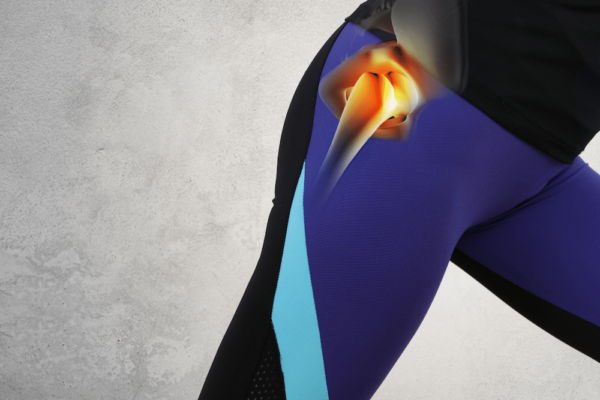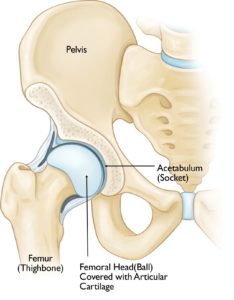
Hip osteoarthritis (OA Hip)
Hip osteoarthritis is the inflammation and deterioration of the cartilage in the hip joint, which is more common as people get older. It can strike at any age, but older persons are more likely to be diagnosed. Osteoarthritis develops when the soft, shock-absorbing cartilage that lines and cushions the joint surfaces breaks down due to injury or inflammation. The joint might become painful and swollen when the cartilage is injured. This syndrome can develop to stiffness, muscle weakening, and growing pain, limiting function over time.
Your Care Pathway with us:
- To book an appointment call reception at 01189344055, email to [email protected] or click the button given below.
- Complete MSK examination and detailed MSK ultrasound scan.
- Discussion of your treatment plan; Treatment plan may include i.e. advanced treatments; cortisone/steroid injections, Ostenil Plus (Hyaluronic Acid), or conservative management like physiotherapy, shockwave therapy, massage, acupuncture.
Injection Therapy For Hip osteoarthritis
How Do I Book Cortisone and Ostenil plus Injection For OA Hip?
To book for a steroid injection you can call our normal reception line, 0118 934 4055 or email direct to [email protected] requesting an appointment for an injection. Please include your name, date of birth, your address and GP contact details. You will be sent a form to complete and forward back to us or bring along on the day which gives information about the injection. To learn more about injections therapy click here.
Free Phone Triage
Booking and Cost
To book a steroid injection call our normal reception 0118 934 4055 and ask to book an appointment for an injection. Or Book Online!
If on the day the decision is made not to proceed with the injection you will only be charged the normal clinic assessment fee.
Steroid Injection cost (including cost of steroid):
- Single injection: £250.00
- Two injections: £475.00
Booking and Cost
To book an Ostenil injection call our normal reception 0118 934 4055 and ask to book an appointment for an injection. Or Book online.
If on the day the decision is made not to proceed with the injection you will only be charged the normal clinic assessment fee.
OSTENIL® PLUS Injection cost:
- Single injection: £350.00
- Two injections: £675.00
Hip OA can occur for a variety of reasons. Hip OA symptoms are more likely to develop with age and in persons who have previously hurt their hip. The lifetime risk, or the chance of acquiring symptomatic hip OA during one’s lifetime, is 25%.
According to a recent study, there is no variation in the rate of hip OA in the general population based on race, gender, weight, or educational level.
Hip OA that is more severe may necessitate hip joint replacement surgery. Physiotherapists construct customised exercise and treatment programmes to manage pain and get people with hip OA moving again, whether or not they have surgery.

Signs and Symptoms
Hip OA can induce a variety of symptoms, including:
- Sharp, shooting pain in the hip, groyne, thigh, knee, or buttocks, or dull, achy pain in the hip, groyne, thigh, knee, or buttocks.
- Hip joint stiffness that gets worse after sleeping or sitting.
- Muscle weakness in the lower extremities.
- When the hip joint is manipulated, there is a “crunching” sound created by bone scraping against bone.
- Getting out of bed, standing up from a sitting position, walking, or ascending stairs is difficult and painful.
- Having trouble doing simple daily tasks like putting on socks and shoes.
Diagnosis
Your physiotherapist at Physiocare Twyford Reading will undertake a thorough examination, including a review of your medical history and questions such as:
- When and how often do you experience pain or stiffness?
- What activities do you find difficult because of the discomfort and stiffness?
Your physiotherapist will run a series of tests to see if you have hip OA, including:
- Moving your leg in all directions gently (range-of-motion test)
- As the physiotherapist gently pushes your leg and hip in different directions, you are asked to resist (muscle-strength test)
- I’m keeping an eye on you to see if you’re limping.
- You’re being asked to balance while standing (balance test)
- The hip joint’s mobility is tested.
- Observe how you ascend stairs, move from one position to another, and so forth.
Additional tests may be used by your physiotherapist to look for abnormalities in other sections of your body, such as your lower back. The therapist may suggest that you see an orthopaedic specialist, who can confirm the diagnosis with diagnostic tests such as an X-ray or magnetic resonance imaging (MRI).
How Can a Physiotherapist at Physiocare Twyford Reading Help?
Your physiotherapist at Physiocare in Twyford Reading will explain what hip OA is, how it’s treated, the benefits of exercise, the importance of increasing overall daily physical activity, and how to keep your hip joint safe while walking, sitting, climbing stairs, standing, carrying loads, and lying in bed.
Any specific physical symptoms you have that are associated to hip OA, such as loss of mobility, muscular weakness, or balance issues, will be revealed through testing. The therapy of hip OA necessitates addressing issues in the surrounding body parts, such as the spine and lower extremity.
Hip OA discomfort can be alleviated by engaging in easy, safe, and effective physical activities such as walking, biking, or swimming.
Although physical activity might help delay the onset of hip OA disability, people may avoid it because to pain and stiffness, misunderstanding about how much and what exercise to undertake, and a lack of knowledge about when they would notice benefits. Your physiotherapist will be able to assist you in developing a personalised exercise regimen to help relieve your pain and stiffness.
Your physiotherapist will work with you to achieve the following goals:
- Reduce your discomfort.
- Improve the motion of your legs, hips, and back.
- Improve your walking ability, standing balance, and strength.
- Accelerate your recovery and return to activities and sport.
Reduce pain
To regulate and relieve your pain, your physiotherapist can use a variety of treatments and technologies, including cold, heat, electrical stimulation, taping, exercises, and hands-on (manual) therapy techniques including joint mobilisation and soft-tissue mobilisation.
Improve motion
Your physiotherapist will recommend particular exercises and treatments to help you regain normal leg and hip movement. These may begin with “passive” motions performed by the physiotherapist to gently move your leg and hip joint, and progress to active exercises and stretches performed by you. Sustained stretches and manual therapy techniques that gently manipulate the joint and stretch the muscles around it may also be used by your physiotherapist.
Improve strength
At each stage of rehabilitation, certain activities will aid healing; your physiotherapist will select and teach you the proper exercises to gradually rebuild your strength and agility. Weights, resistance bands, weight-lifting equipment, and cardio (heart) exercise equipment, such as treadmills or stationary bicycles, can all be used as resistance.
Speed recovery time
Your physiotherapist will devise a treatment plan tailored to your needs in order to expedite your recovery. Your therapist is qualified and experienced in selecting the appropriate treatments and exercises to help you heal, reclaim your normal lifestyle, and achieve your goals more quickly than you would on your own.
Return to activities
Your physiotherapist at Physiocare in Twyford Reading will create a treatment plan that will allow you to return to work or sports in the safest, quickest, and most effective manner possible. To assist you attain your goals, you can participate in job retraining activities or learn sport-specific methods and drills. For a safe return to exercise and to assist control symptoms that may obstruct your recovery, activity moderation is crucial.
If Surgery Is Necessary
The hip joint degenerates in severe cases of hip OA until bone rubs on bone. This issue could necessitate hip replacement surgery. Physiotherapy is an important element of the recovery process after surgery, which might take several months.
If you have hip joint replacement surgery, a physiotherapist will come to your hospital room to assist you in getting out of bed and teaching you how to walk, as well as explain any actions you should avoid in order to protect the healing hip area.
Physiotherapists at Physiocare in Twyford Reading will work with you daily in the hospital and then once you are discharged, they will be an integral part of your care and recovery, helping you minimise pain, restore motion and strength, and return to normal activities in the quickest and safest way possible after surgery.
Fluid aspiration via injection (arthrocentesis)
A knee joint generally contains a few millilitres of synovial fluid, which lubricates it for easy movement. Inflammation can promote fluid buildup in the knee. Arthrocentesis removes excess fluid from the knee, reducing swelling and relieving pain.
If your doctor suspects a joint infection, aspirating the joint fluid is critical. You give a lab a sample of your joint fluid to count, culture, and antimicrobial sensitivity.
Joint Aspiration Fee: £120
Book your appointment today – call 0118 934 4055 CONTACT US



